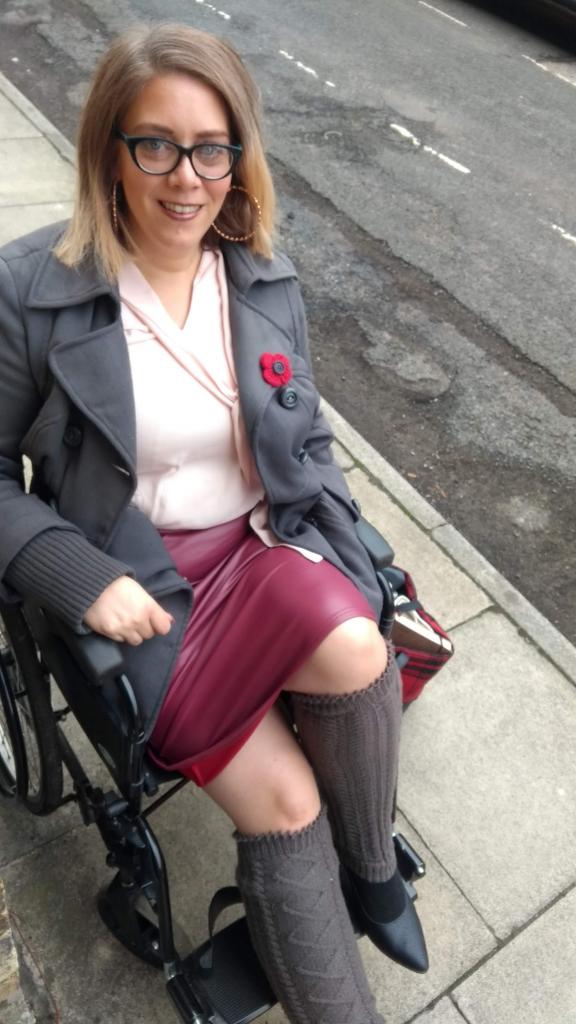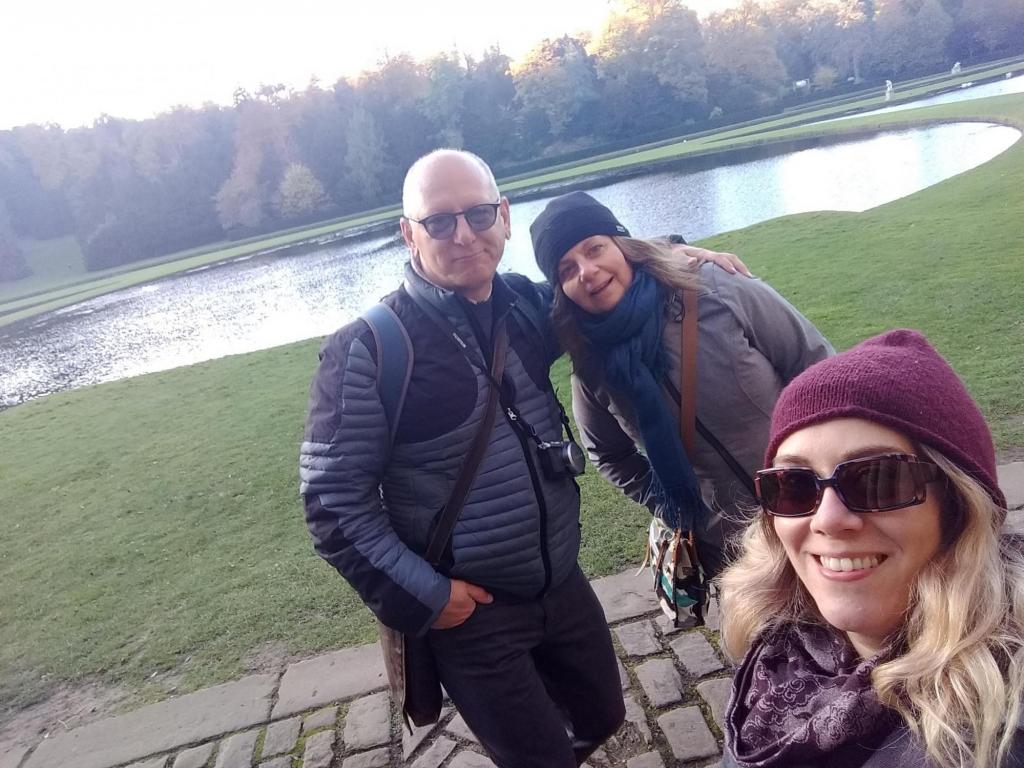I’ve gone and done something pretty stupid. I’ve broken my ankle. Which actually means that I’ve broken both of the major leg bones, the fibula and the tibia, right where they meet the foot. It’s called a bimalleolar fracture. We both know you don’t really want me to get into the details, so just google it if you want to see x-ray examples of the kind of hardware I’m touting in my ankle now. Let’s just say that my high school crush on Data from Star Trek doesn’t feel so far-fetched now. (Because I’m basically a cyborg… get it?) Here’s a quick summary; there was surgery, there will be scars, and I’ve been getting around primarily by wheelchair and crutches for the past six weeks.

Right, but what does this have to do with Culture Vulture, you ask? Well, I’m telling you for two reasons. First, it explains why you didn’t get your usual dose of brilliant Canadian insight last month, and second, the resulting use of amended transportation is the focus of this month’s rant column; Accessible York. I am coming at this from a place of non-disabled privilege, this being the first time I’ve really ever had to consider accessibility aside from how to get a pram into a coffee shop. Not the same thing, believe me. My experiences are limited and temporary, and I do not deign to speak for an entire community. Rather, I share my experiences and thoughts in hopes of illuminating those who have never, and possibly will never, have to think about whether the shop you need to pop into is actually accessible.
Speaking of the consideration of the non-disabled public – let’s begin there, shall we? I think I have a fairly considerate concept of spatial awareness. Where is the kerb of the sidewalk (sorry, pavement… In Canada, our streets are pavement and our pavement is sidewalk), am I about to force a child or an elderly person to step into the road to move around me, or is there someone standing at a stop light already, I should probably not step directly in front of them; these kinds of things. Basic tenets of common courtesy. Well, I’m going to generalise for a moment, but non-disabled people are basically jerks not remotely aware of much beyond their nose. Okay, so it’s not fair to paint everyone with the same brush. Some people are decent. Some of you will hold a door or step aside on the pavement. But many just don’t. Primarily, I think, because when I am in a wheelchair, I’m not seen. Not in a “hey, I’m down here by your elbow, please don’t knock me in the head as I go past” kind of way (that happened), but in the, “you don’t actually exist” way. Some of my neighbours walked right past me on my street, not because they don’t like me (although they might not), but because many people just don’t look down to see the person in the chair. This is obviously not news to people who use wheelchairs long-term, and I don’t want to say that it’s the norm, given my limited experience. But it was the norm in my experience.
The friend who loaned me her chair warned me that I should add at least 20 minutes to my usual journey time, because of human obstacles. She didn’t use that term, but that’s essentially what they were. On one occasion, as my husband pushed me through town, a family of five with a push chair (and therefore presumably slightly “woke” to spatial awareness) stopped on the pavement ahead of us to have a conversation. The adults glanced at us, saw that we were stuck waiting for them to move aside, and they simply continued to chat for several minutes. This was the first of no less than seven times on that trip where we had to stop because people simply didn’t step a few feet to one side to let us pass.
Beyond people, the city itself was also a challenge. I’ve been trying to use the chair on my own whenever possible; it’s a great arm workout, to say the least. But let’s talk about the pavement. None of York’s pavement is level (that might be an exaggeration, but I feel pretty confident making that statement). It might seem level to the naked eye, but try pushing a wheelchair on it and you’ll quickly learn that it slopes away from the buildings towards the roads. A lot. As such, taking solo trips into the city centre would have meant using only one arm, or finding myself flipped over in the road. As soon as you try using both wheels on a slant, you move rapidly towards the low point.
Oh, and York? I did so love your storied history when I moved here. But everything that I once loved about you – your medieval cobbled roads, your lovely shops in leaning, twisted, listed buildings that require a climb of several steps to get into – are the things that now make life a daily challenge. Cobblestones are hard. Slanting pavement is hard. Inconsiderate people are hard.
No hold up, because I have had some lovely experiences too. A few weeks after I broke my ankle, we had guests visiting from Canada (I have such good timing, don’t I?). I love my second home (other than its sloping pavement) and I love to be a tour guide to visitors. For the above-mentioned reasons, though, I figured it might be a challenge. Calling ahead became a standard step before making plans, and I learned that most attractions had excellent accessibility. We weren’t able to book a wheelchair slot at the Jorvik Centre, but they were very accommodating, allowing us to store the chair safely, and I got around on my crutches easily. The staff ensured I got a front row seat on the ride, which meant no steps to get in. I haven’t been to Jorvik since the flood, and loved the upgrades to the Viking village ride. Most importantly, my favourite part – the dude having a rough go of it in the outhouse – was still there.
After Jorvik, we headed to the Minster, where we took in the stained-glass tour. I don’t want to sound like my Grandma but… it’s a really great way to see the Minster from a different perspective. There’s 128 stained-glass windows in the minster, and aside from the Rose Window or the Great East Window, I’m willing to bet most people don’t take much note of them other than to acknowledge their overwhelming beauty. Honestly – and I’m really not being sarcastic here people – the history of the craft, and of the windows themselves, is really fascinating. The volunteers who do the tours are really passionate. I wouldn’t recommend it if you’re visiting with children, but my daughter does love the adventure backpacks the Minster offers for kids, and I was informed that they were updated this summer, so there are new things for the seasoned explorer to do.
All in all, I was really pleased with the accessibility of the local attractions. Okay, so the visit to the Shambles was a bit bumpy (damn you, cobblestones!) and our guests had to walk the walls without me, but we hit some highlights.
I also assumed that trips to country-side attractions were totally out. Wrong. I was really pleased to discover that many National Trust properties provide free battery-powered wheelchairs (advanced booking required, they’re quite popular!). We managed to visit both Beningbrough Hall – my daughter’s favourite – and Fountains Abbey, which was new to us all. It was the only place our guests specifically requested to visit, and I really can’t recommend it enough. The ruins rival those at Rievaulx (my previous favourite day-trip) and there’s acres of water features and follies to boot! It really was worth the entrance fee for our guests, and as members ourselves, we’ll be heading back over the holiday season to catch the carols in the illuminated ruins.

I’ll be out of my cast soon and testing the hardware in my ankle. I know that my life, and the challenges I’ve faced during my six weeks of healing, isn’t comparable to the experiences of people who deal with accessibility issues on a daily basis. But I hope my weeks of engagement with these challenges have made me into less of a jerk, and maybe sharing my perspective will make you less of a jerk too.









Add a comment